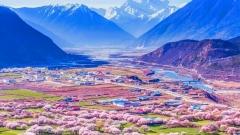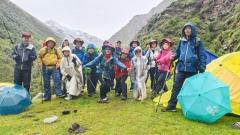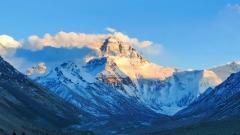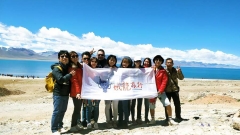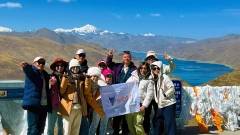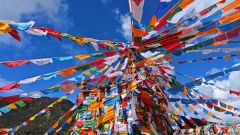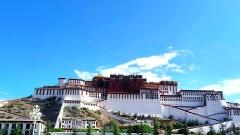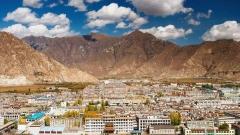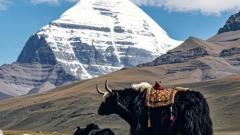Solo adventures in Tibet offer more than just breathtaking landscapes and profound cultural encounters – they also promise a highly secure travel experience. Unlike many destinations, Tibet mandates that all international visitors travel with a licensed local guide arranged through a registered tour agency, ensuring you’re never truly on your own. Coupled with exceptionally low crime rates, well‑maintained infrastructure, and community values rooted in compassion, Tibet stands out as one of the safest places on Earth for independent explorers, including solo women. The primary challenge lies in Tibet’s high altitude, but with gradual acclimatization and expert guidance, this too becomes manageable. Below, we answer the most pressing questions solo travelers ask, equipping you with the knowledge to embark on your Tibetan journey with confidence.
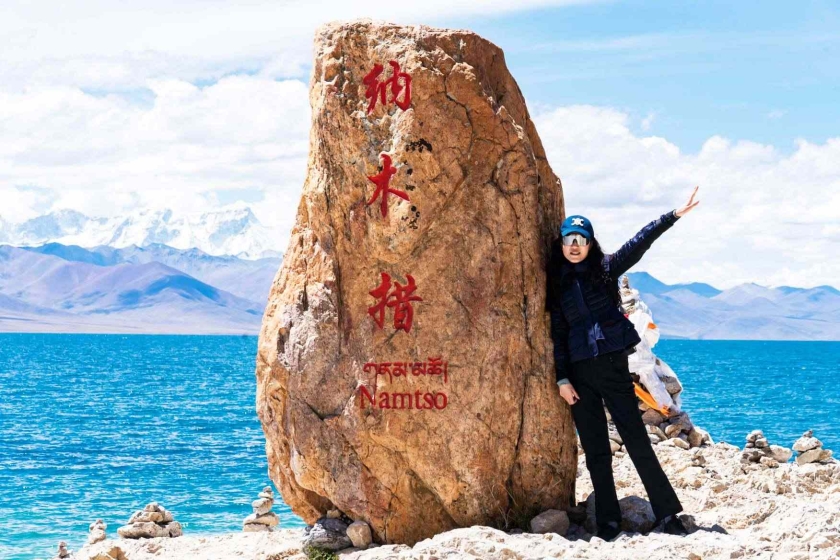
What Makes Tibet Safe for Solo Travelers?
Tibet’s tourism policy requires every foreign visitor to book a pre‑arranged tour through a licensed local agency and be accompanied by an official Tibetan guide at all times. This regulation guarantees that you have professional support for navigation, cultural interpretation, and medical emergencies throughout your trip. Whether you opt for a private expedition – trekking, cycling, or spiritual retreats – or join a small group of like‑minded travelers, your guide’s local expertise reduces risk and enriches your experience.
What Is the Biggest Challenge for Solo Travelers Visiting Tibet?
The true test for many first‑time Tibetan visitors is coping with high altitude. Much of the plateau averages above 4,500 m, with Lhasa itself sitting at 3,650 m, resulting in significantly lower oxygen levels than most people are used to. Altitude sickness can manifest as headaches, dizziness, nausea, and fatigue – symptoms that range from mild discomfort to severe health risks if ignored.
How Can You Minimize the Risk of Altitude Sickness?
- Consult Your Doctor: Obtain advice on preventive medications, such as acetazolamide, and pack over‑the‑counter remedies for headaches and nausea.
- Hydrate Religiously: Drink at least 3–4 L of bottled water daily, and limit caffeine and alcohol, which can exacerbate dehydration.
- Rest and Recover: Allocate 1–2 days in Lhasa (3,650 m) before ascending to higher altitudes; avoid strenuous activity and delay showers immediately upon arrival to conserve energy.
- Use Supplemental Oxygen: Guides carry portable oxygen bottles and are trained to monitor your condition. If symptoms worsen, they can descend to lower elevations and arrange medical care as needed.
By following these steps, most travelers adapt within a couple of days and enjoy the journey comfortably.
Is Crime a Concern for Solo Travelers in Tibet?
Crime rates in Tibet are among the lowest globally. Violent incidents are virtually unheard of, and petty theft or pickpocketing is extremely rare. The predominance of Buddhist values – emphasizing compassion and nonviolence – permeates daily life, fostering a respectful and protective environment for visitors. Standard precautions, such as safeguarding valuables in hotel safes and staying aware in crowded places, are more than sufficient to ensure personal security.
Is Tibet Safe for Solo Female Travelers?
Tibet consistently ranks as one of the world’s safest destinations for women traveling alone. Local customs place great value on hospitality and respect, meaning women can walk city streets and use public transport without fear of harassment. From markets to monasteries, solo female travelers encounter the same courtesy and protection as their male counterparts. As always, sticking to well‑lit areas at night adds an extra layer of comfort, but incidents are exceedingly uncommon.
How Safe Is Road Travel in Tibet?
In recent years, Tibet has seen massive investments in road infrastructure, resulting in well‑paved highways connecting Lhasa, Shigatse, Everest Base Camp, and the Nepal border at Gyirong . Tour vehicles are equipped for high‑altitude conditions and driven by experienced local guides who plan itineraries with acclimatization stops built in . Strict speed limits and section‑based speed control ensure careful driving, even during peak tourist seasons. For those considering self‑drive, extra vigilance is essential on long, remote stretches, but guided transport remains the recommended option for safety.
Is It Safe to Dine Alone in Tibet?
Solo dining in Tibet is not only safe but also a delightful way to immerse yourself in local culture. In larger cities like Lhasa and Shigatse, you’ll find Tibetan, Nepali, Indian, Chinese, and Western eateries; smaller towns focus on Tibetan staples like tsampa, momos, thukpa noodle stew, and butter tea. Local ingredients and cooking methods generally ensure hygiene, but tap water should be avoided – stick to bottled water for drinking and brushing teeth. Bringing pre‑packaged snacks can be helpful on remote stretches.
What Local Customs Should Solo Travelers Observe?
Respect for Tibetan customs deepens both safety and cultural connection. Key guidelines include:
- Modest Dress: Cover shoulders and knees – especially in monasteries – to honor religious traditions and stay warm.
- Photography Etiquette: Always ask permission before photographing people or sacred sites to avoid offending local sensibilities.
- Temple Conduct: Maintain silence, remove hats, and refrain from touching statues of Buddha.
- Personal Boundaries: Never touch someone’s head; it’s considered disrespectful in Tibetan culture .
Following these practices not only safeguards you from social missteps but also enriches your travel experience.
Should You Be Cautious Around Tibetan Mastiffs?
In nomadic regions, free‑roaming Tibetan mastiffs and stray dogs can exhibit protective aggression near tents and camps. Solo travelers should keep a safe distance from unsupervised packs and avoid attempting to pet stray animals. Conversely, well‑tamed mastiffs adorned with traditional collars – often found at monasteries and tourist sites like Yamdrok and Namtso lakes – are generally friendly and pose no threat.
Travel With China Dragon Travel

Tibet’s blend of mandatory guided travel, ultra‑low crime, and robust infrastructure makes it one of the safest destinations for solo travelers, including women venturing alone. By preparing for altitude acclimatization, respecting cultural norms, and relying on an experienced Tibetan guide, you can explore the Roof of the World with confidence and ease. For a seamless, worry‑free journey – complete with permit processing, tailored itineraries, and expert local guidance – consider booking your solo expedition with China Dragon Travel, your trusted partner in crafting unforgettable Tibetan adventures.



